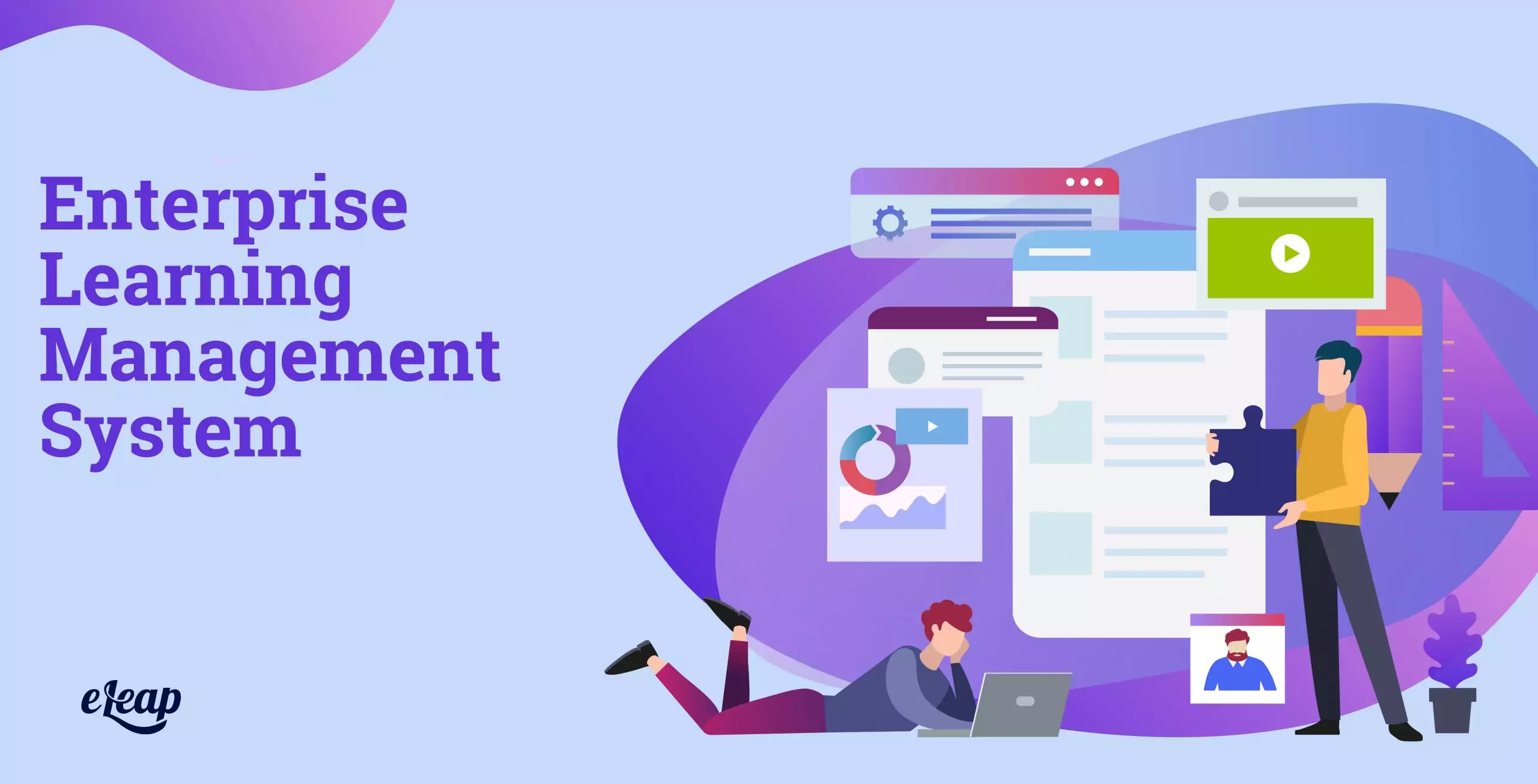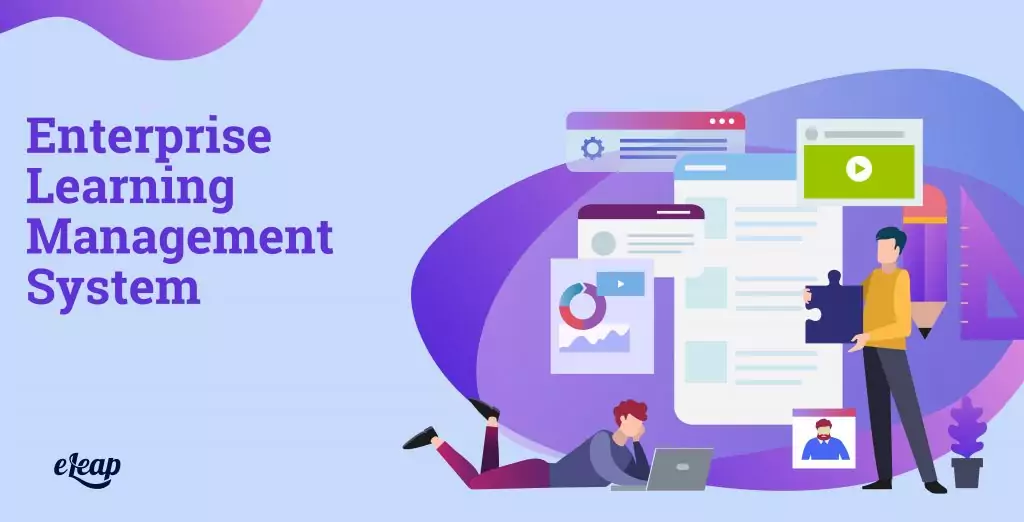Enterprise Learning Management System
The Video Trend In Enterprise Learning Management Systems

Learning management systems provide vital capabilities and benefits. However, they’re definitely not created equal. Many companies are unhappy with the capabilities and performance of their LMS platform – so much so that they’re seeking a replacement. If you find yourself in this camp, it’s important to know what to look for in an enterprise learning management system. It’s also important to understand how today’s LMS platforms differ from traditional options.
The Problem with a Traditional LMS
The traditional enterprise learning management system is a dying breed. The reason for its obsolescence is its inability to deliver content that suits different learners. In the past, most learning management systems focused on text-heavy pages presented in a slide-show-like format. The result? An unengaging experience. Boredom. Apathetic learners.
Even when this was the norm, traditional learning management systems weren’t well-liked. Fast-forward a few decades to a time when most learners expect an experience on par with their everyday interactions with other technology and you can see why traditional systems are on the way out. They simply cannot compare and the experience they deliver is incredibly subpar.

Modern Enterprise Learning Management System Benefits
How does the modern enterprise learning management system get around the drawbacks of the traditional model? It breaks the mold in several ways. We’ll explore those below, but, in a nutshell, today’s systems allow you to cater to the learning needs of all employees. It’s about creating an engaging, dynamic, enjoyable experience that fosters better information retention. After all, what’s the point of training if your employees don’t remember what they’ve learned?
Video Content Delivery
One of the most critical advancements in terms of enterprise learning management system technology is the ability to deliver video content. Not only do your learners expect video training, but the format offers some pretty impressive benefits, including the following:
- Over 60% of your employees are probably visual learners, so video content offers an engaging experience for many people.
- Up to 90% of the information the brain processes is visual, which means video content is more fully absorbed.
- Video can change how your employees learn and boost information retention significantly.
- Video content can improve learning outcomes and enhance your employees’ ability to apply new knowledge to their daily routines and responsibilities.
- Video training can boost productivity and efficiency, supporting employee success, and improved company performance.
With that being said, the enterprise learning management system you choose must do more than merely give video content a nod. It shouldn’t feel “tacked on”. Ultimately, you should design the entire system around video as one of the core content types. Rather than an afterthought, it should be a fully-integrated feature.
Interactive Content
Video is just one type of content your LMS should be able to utilize. Remember that while visual learners account for more than half of your workforce, there’s still a significant number of learners not represented within that percentage. One group that is often overlooked includes your kinesthetic learners – those who learn by doing.
Interactive content creates an engaging, enjoyable experience for these learners. You can also integrate interactivity with video content, particularly with a cloud-based enterprise learning management system. What does “interactive” truly mean, though?
- Interactive content requires that the learner interacts with the lesson in some way.
- Scenarios allow users to make their own choices from a range of options and progress down a specific path of their choosing.
- Simulations offer an immersive experience that mimics real life, providing the employee the chance to get “hands-on” with the material.
- Stories allow the learner to choose what steps they take while walking them through the outcomes of their actions.
- Quizzes allow the user to choose answers to questions based on the content covered in the module.
These are just a few examples of interactive content – there are tons of others.
Audio Content
Audio learners represent a portion of your audience. These learners retain more of the information they hear than what they read or what they see presented in a video. The good news is that you can incorporate audio into your enterprise learning management system in quite a few ways, including audio narration in videos, narrated text, and many more.
Gamification
Gamification combines visual learning with kinesthetic learning. In some cases, it can also combine audio. It offers a more immersive, engaging experience for learners. However, don’t assume that you need to transform your existing content into full-fledged games. That is possible, but there’s so much more here.
Gamification simply means adding game-like elements into your content and within the wider enterprise learning management system. For instance, giving your learners access to a central dashboard where they can view their completion scores and compare them to those of other learners can add an element of competition. Take that a step further and add leaderboards to increase the game-like feel.
With that being said, you can (and probably should) add actual games to the content that tie into the material being taught. For instance, a spin-the-wheel game can be tied into a multiple choice quiz on the content. The learner clicks to spin the wheel, which comes to rest on a particular topic or category covered in the lesson. That determines the question the learner must answer.
In Conclusion
Your enterprise learning management system should support a wide range of content types, from text-based content to games, and everything in between. However, it should also be flexible enough to accommodate other emerging trends, such as blended learning, or the creation of customized, branded learning material, or even the ability to brand and sell your courses.
With that being said, not all LMS platforms offer these capabilities. Compare your options and make an informed decision that will support your learners while boosting engagement and information retention. eLeaP LMS provides strong enterprise learning management system capabilities.
Need additional information? Check out these resources:
- Learning Management Suite
- LMS Features
- Online Training System
- LMS Definition
- Other LMS Terms and Searches